I’ve been a long-time user of Mint.com. If you’re not familiar with Mint, it is a free online personal budgeting tool that allows you to see your whole financial life in one place. Whether it’s checking, savings, credit cards, PayPal, investments, retirement accounts or any other personal finance accounts, Mint.com is your one-stop shop to manage them all. In this review, I’ll share my experience with Mint.com.
Before I go into specifics, let me say that there is a difference between liking a product and liking what it does for you. Mint.com is an example of an innovation that delivers on both. It's an inherently good concept and very well executed.
It was created by Intuit, the same company that created Quicken. So, Mint is similar, if less complicated. Like Quicken, it tries to manage all aspects of your finances--from your budget to your debt to your investments. That’s good in that this tool covers everything. It’s bad in that there are more specific tools on the market that may do certain jobs better. For example, if your primary goal is to track investments, then Empower is by far the better choice. And if all you want to do is track a budget, YNAB may be the better choice.
(Personal Capital is now Empower)
Compare: Mint or Empower: Which Is Better for Managing Your Money?
How to Get Started with Mint.com
To begin, simply create a Mint account (it's free). Once created, you will be prompted to add all of your financial accounts, including your bank account, credit cards, home loan, and investment account information. This is the critical step to getting the most out of Mint.
You add these accounts in two steps. First you search for your financial institution on Mint. They have just about every bank, credit card company, and investment broker imaginable. Once you locate the financial institution you want to add, you’ll be prompted to enter the log-in credentials you use to access that account. This allows Mint to access your accounts and download your financial information into Mint.
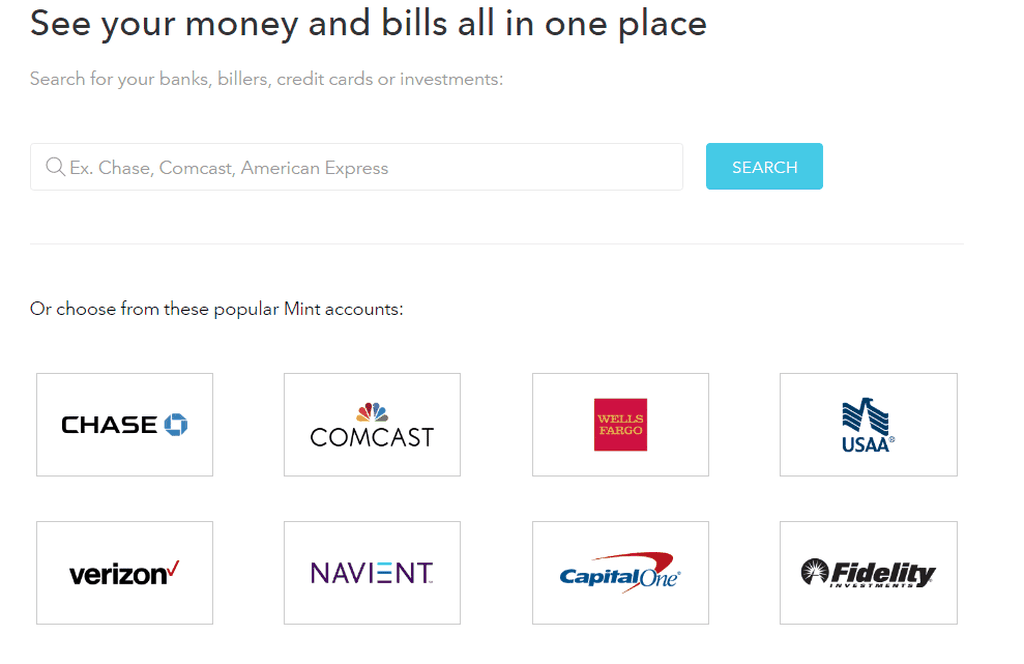
There are a few things you should know about this process:
- It’s secure. I was a bit nervous giving a third party all this financial information. But Mint.com uses the same encryption banks use to keep your information safe. People have been using this service for years without any issues.
- It works with most (but not all) accounts. Mint.com can connect with most accounts, especially from larger banks, lenders, and credit unions. But I have run into accounts that can’t connect with Mint, usually because of the type of security protocols those accounts use. If you can’t connect your main spending account with Mint, that might be a deal-breaker. But if you’re just missing your mortgage account, for instance, you can still make the most of this tool.
- Most access is read-only. Mint will pull down information from your financial accounts automatically. In fact, that’s one of the things that makes it such a powerful tool. You don’t have to manually enter all that information each time you sit down to manage your budget. But that automatic access is read-only and gives Mint no power to move your money around.
- You can give it further access. You can now use Mint as a bill-paying tool, which is pretty great. It gives you the option to pay your bills from a single interface, rather than running all over the internet to get it done. But you’ll have to give the system additional information, like your account numbers, for it to transfer any funds for you.
- It’s usually really quick. Every once in a while, Mint will encounter an account that’s hard to connect with, or your bank or credit card company will be down for a bit. In this case, it can take longer to get information into Mint. But usually, the process is finished in minutes.
What Makes Mint.com So Awesome?
So, why do you even want to get started with Mint? Here are just a few of the things that make it such a great option:
- It’s free! Free budgeting software is somewhat common, but Quicken is still an expensive service. Mint does just about everything Quicken does, without any costs at all.
- It’s super simple to use. Because it downloads all of your transactions for you, you don’t have to do much but assign transactions to their proper categories. And over time, Mint gets more familiar with how your monthly transactions need to be categorized, so it even does that for you.
- It’s totally customizable. You can have hundreds of budget categories or just a handful. Or you can have several goals or none. You can hook Mint.com up with your investment accounts or not. It’s basically up to you!
Read More: Alternatives to Quicken That Are Easy to Use
Now you know why you should at least check out this service. So, let's talk about the sections you'll see once you log in.
Overview
Called an Overview, the first thing you see when you log into Mint.com is a snapshot of your finances. I use this screen more than any other. From the Overview, I can look at the balances in all of my bank accounts, see how my investments are doing, check my credit card balances, and get alerts about upcoming bills.
Here's a screenshot of the Overview in Mint:
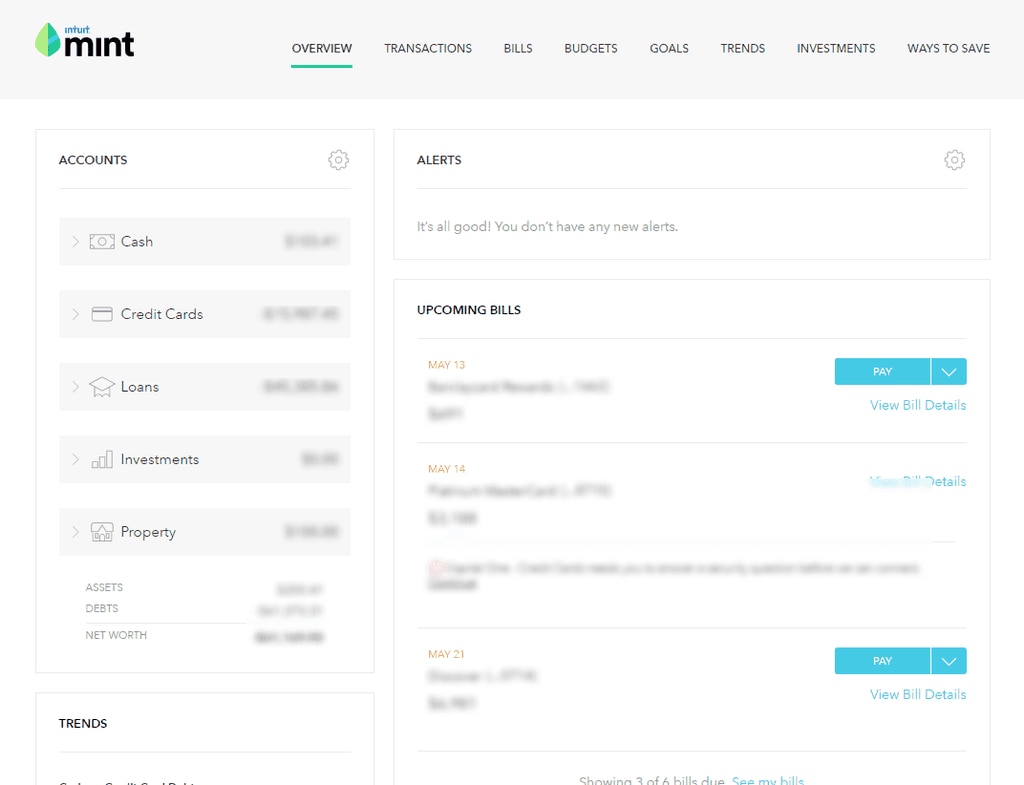
The Overview screen shows your upcoming bills, as well as any alerts. Mint will let you know if your bills are overdue, or if you’re approaching your credit limit on a credit card account, among other things. You’ll also get trends charts, which show your income and credit versus bank account spending over time. At the bottom of the page, you can get a free credit score from Equifax if you add in some additional information. And Mint will keep a running list of offers — especially for loans and credit cards — for which you might qualify.
Generally, as you'd expect, this screen is an overview of your financial life.
Transactions
As the name suggests, with the Transaction page, you see all of the transactions from all of the accounts you've linked to Mint. I use this page to categorize all of my spending. Mint does a reasonably good job at knowing how to categorize many transactions automatically. But there are always some transactions that I have to categorize myself.
On the Transactions page, you can toggle to see only transactions from your bank accounts, from your investment accounts, or from your credit card accounts. You can also look at transactions for specific accounts, or search for specific transactions using the search bar.
Bills
Bill-pay is a relatively new feature of Mint.com, but it's quite convenient. In this section, you can actually pay your bills from the Mint interface. Again, you'll have to input your account number to actually have Mint pay the bills. You can also mark the bills as paid if you decide to pay them elsewhere. The calendar tells you where your bills are coming up, and marks them as you pay them.
This is a helpful feature for managing cash flow, and it’s one I may start using myself to streamline the bill-paying process.
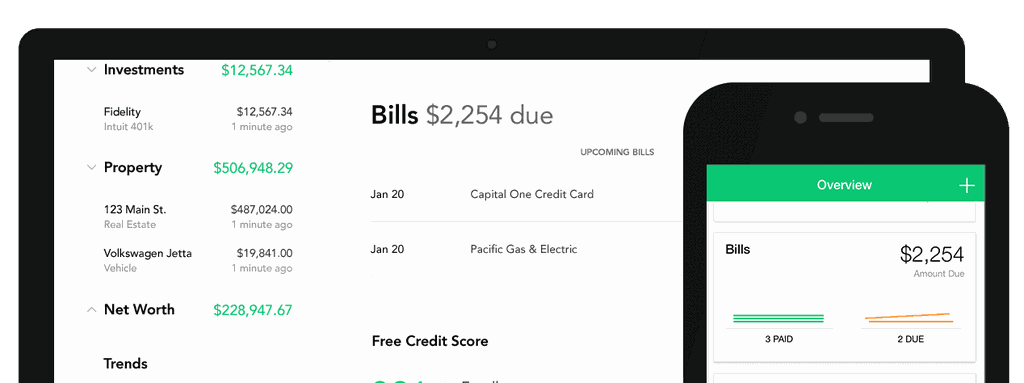
Budgets
For many, this is the heart and soul of Mint.com. The Budgets feature makes it ridiculously easy to set up and track your monthly budget. One of the features of this screen that many people love is how easy it is to get an at-a-glance visual representation of your budget. Each section of your budget gets a bar. If the bar is green, that means you're well under budget. If it's yellow, you're getting close or have met your budget. When it turns red, you've gone over budget in that category.
Read More: A 10 Minute Budget That Really Works
The section also lets you track income, and gives you an overview of your estimated income, budgeted expenses, and goals, as well as any money you’d have leftover. If your goal is to use a zero-based budget, you want to have no money left in that equation. If you only want to track a few problem budget areas, you might have a lot of money that goes into the “everything else” category.
There are two ways to set up a budget in Mint:
- Create one yourself. If you’ve already been using another budgeting software or an old-fashioned spreadsheet, this will be easy. You can just create the categories you already use, and assign your budget amount. Or you can make guesses if you’re just starting to budget based on what you know of your own spending patterns.
- Use Mint to help you create one. When you first start your Mint account, it will actually pull in transactions from the last few months. And as you use the software more and assign categories to more transactions, it will start to help you find spending patterns. For instance, it will tell you your average spending in some categories. Mint will also tell you the average US spending in each category, which can be helpful if you’re new to budgeting. The more information you give Mint, the more accurate its suggestions, like the one shown below, will be.
The first approach can be good if you're trying to be very strict with your spending or have problem areas you need to get a handle on. The second approach is helpful if you're generally good at managing money but want to get a feel for your spending before actually creating a budget to stick to.
Either way, creating a budget on Mint is so simple. You can get as granular as you want. For instance, you could create one large category titled “food,” or several categories, like: groceries, restaurants, coffee shops, and fast food.
This is a great tool, but it does have one major flaw: you can't budget for the next month's income. In fact, I've sometimes seen the system go weird if I mess with budgets around midnight at the turning of a new month. You can sort of budget ahead, in that when you're setting up a budget, you can make it for every month, every few months, or once. So you could set up your annual car registration bill to be divided by 12 months so you're ready to pay it when the time comes. But, still, not being about to customize your budget for future months is a definite weakness.
Goals
Mint Goals are a simple way to track your progress on important financial steps. Mint offers some basic goals to choose from, like saving for a home or vacation or paying down credit card debt. But you can also create completely custom goals.
Each goal will hook up with one of your accounts--whether that's a savings account for a saving-related goal or a debt account for a debt payoff goal. This makes it easy to see exactly how far you have to go on your goals. Goals look like this:
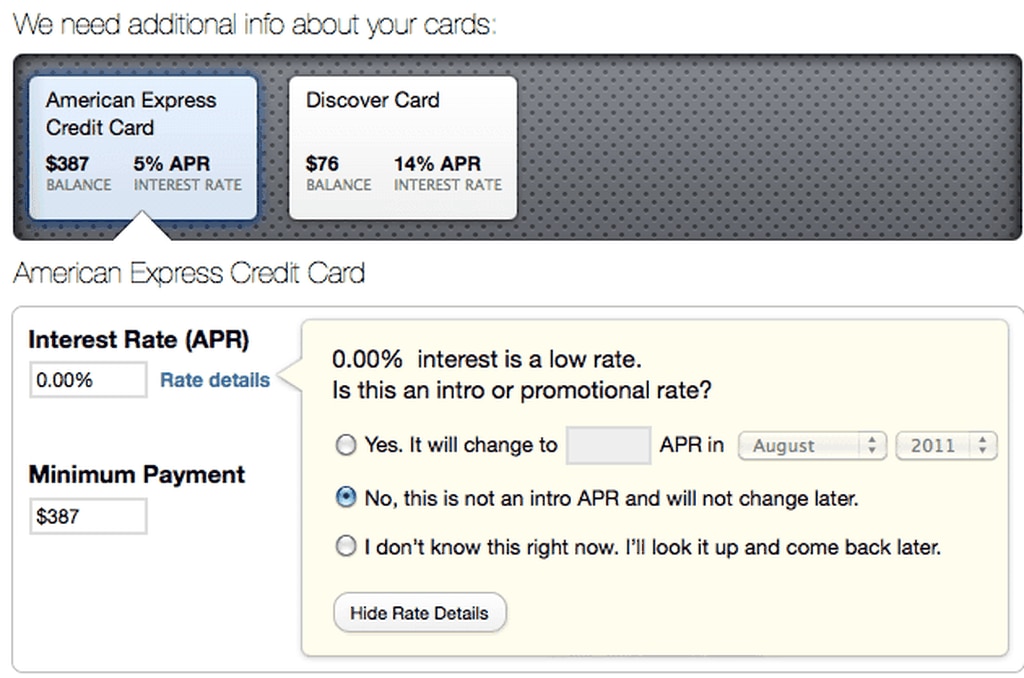
The goal’s functionality has gotten better in recent years. It used to be that goals could make your budget go a little wonky. For instance, if your goal was to pay off a credit card, the payment would count as part of your budget and also part of your goal. It just made things confusing.
Now, though, Mint basically treats goals like a part of your budget... except extra. So, if you don’t make quite enough income for the month to cover your budget basics, you won’t make progress on goals. But if you make extra, you’ll progress on your goals. Also, you can choose to keep your goals separate from the rest of your budget, especially if you’re going to be funding your goal with income that won’t come through one of your budget accounts. Check out these FAQs for more information.
The other cool thing about goals is that Mint now helps you calculate them. It has always calculated things like credit card payoff goals. It’ll tell you how long it will take you to pay off your debts based on different payment amounts. But I recently set up a goal to save for an upcoming vacation. Mint actually helps you decide how much to save by letting you calculate how much you’ll spend on different parts of your vacation when setting your goal:
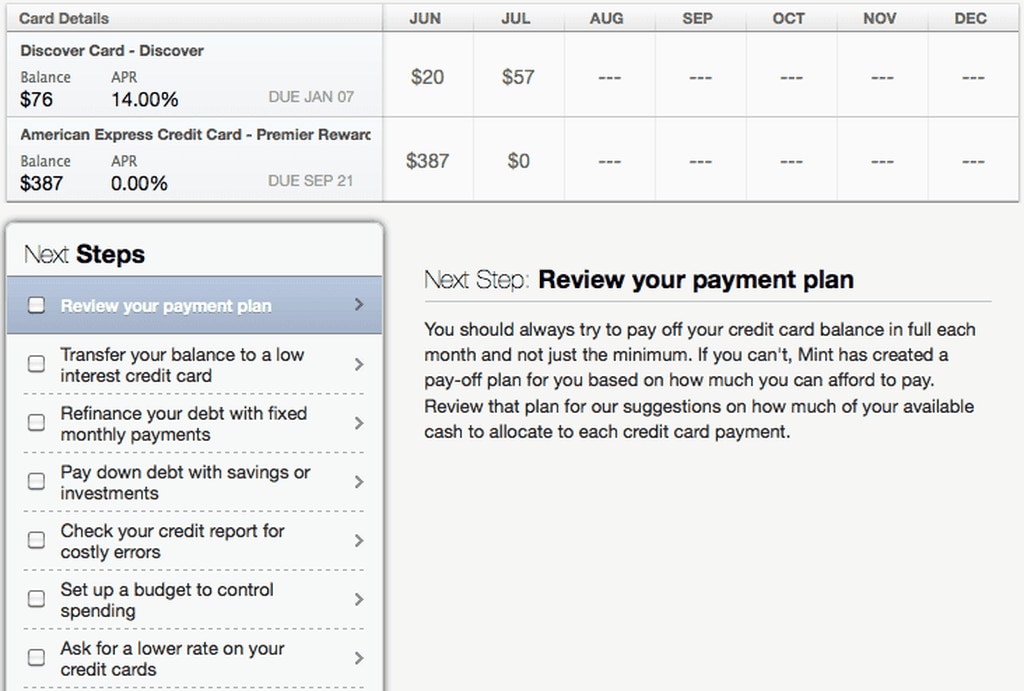
Overall, the goals functionality has improved considerably and helps set Mint apart from other budgeting tools.
Trends
This section of Mint gives you a more holistic overview of your financial life, especially your spending. You can get a pie chart of your spending, debts, income, and other financial markers for the past month or even the past year. The longer you use Mint and keep all your transactions categorized, the more accurate this picture will be. But it can be helpful in seeing where you might want to cut back on spending, for instance.
Investments
This is the disappointing side of Mint.com, at least for me. You can track investment accounts in Mint just like a bank account. Every day after the market closes, I update the investments in my Mint portfolio. This snapshot is very helpful. But that's about all Mint provides when it comes to investments.
So, what’s the problem? Well, there are actually two. First, Mint does not provide any features to help with asset allocation. It would be very helpful if Mint broke down my investments by asset class, much like Morningstar can do. Now, in theory Mint can do this. When you go to the investment page, there is an “allocation” tab. Here’s what mine looks like–
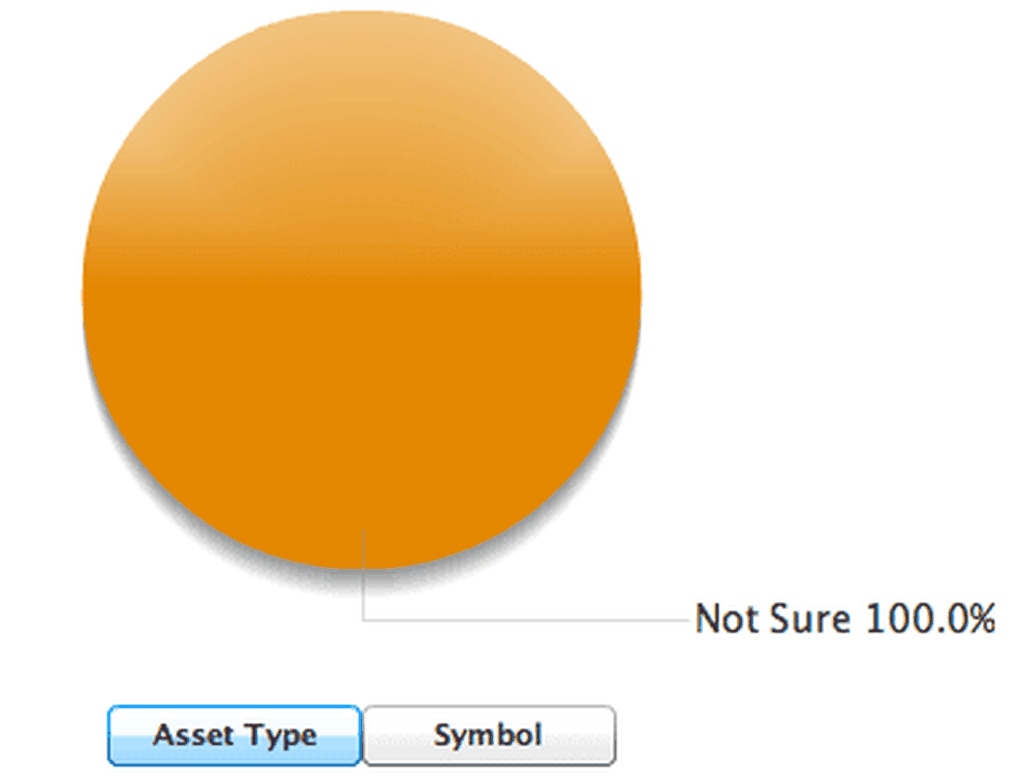
Yeah. Not exactly helpful.
The second problem is even more frustrating. Mint seems to have an issue when it comes to connecting with brokers and mutual fund companies. It's not uncommon for Mint to have trouble downloading investing transactions. And even when it does download the transactions, they don't always appear on its Investing page.
For example, my Overview currently shows all of my investment accounts. But when you go to the Investing page, my Scottrade account is mysteriously gone. Actually, it's listed, but it is greyed out and the value of the account is not added to my total investments. this must simply be a bug in the system, but a very frustrating one.
The fact here is that Mint.com is for budgeting, not investing.
Ways to Save
Mint, it seems, makes its money primarily from recommendations and affiliate links. On this tab, you can find ways that you might be able to save on your car loan, credit cards, or other loan accounts by refinancing or transferring balances to lower-interest or 0% introductory APR cards. Mint's tool is decent, though there are other sites, like Credit Karma, that actually give you your odds of approval for various credit cards based on your current credit score.
A Note on Customer Service
As you'll see in the comments below (since 2010), many users have noted that Mint's customer service isn't the greatest, and that it often has glitches. Both of these things are true, but they seem to be getting better.
For one thing, since it launched, Mint has added loads more accounts to its list. So it’s much more likely that the majority of your financial information can be pulled into Mint. Sometimes, though, you’ll still get an account connection error when Mint is trying to download the latest transactions. Often this is because your financial institution requires a new login confirmation — like answering one of your security questions. It takes a few seconds when you first log in, but it’ll still work.
Another older issue that Mint had was doubling transactions. One thing I like about it, actually, is that it will actually download transactions that are still pending in your bank account. In other software options, like YNAB, you have to wait until the bank clears the transactions to add them to your budget. But with Mint, you can get many transactions same-day.
However, this means that sometimes when the transaction does clear, it'll show up double in Mint. I find that this is more often the case with transactions like restaurant tabs with a tip. Usually, the pending transaction will show up as just the tab, and the tip won't get added until the transaction clears the next day. Sometimes these will show up as two separate transactions in Mint. But you just have to toggle the older transaction to hide it from your budgets and transactions, and it'll go away.
Finally, many people have complained about Mint's customer service. I've found that it's fairly hit or miss. Sometimes you get a quick response from a real person, and sometimes you don't. But any time I've gotten a real person via email, the problem has been solved quickly... or, at least, they have let me know that they were having a system-wide issue and were working to fix the problem for all users.
The bottom line is that any software like this will have glitches and won't have universal connectivity. But Mint has improved significantly and does really well for a service that continues to be free.
Final Thoughts
So, here’s where I come out on Mint.com. If you’re a visual processor, like me, Mint has all the right graphs and charts to make you feel in control of your finances. The program is orderly, easy, and don’t forget, free.
It's an excellent tool for managing your budget, especially if you like the visual overview of your budget that tools like YNAB don't offer. It's also a helpful "beginner budget" tool for those who aren't disciplined about writing down every transaction. As long as all of your accounts are linked to Mint, it'll do the hard work for you.
With that said, Mint is weak in other areas, especially with investing. If you want more control over your investments and advice on allocation, you’ll need another tool, such as Empower, to get that done.
Overall, Mint is worth trying if you’re interested in an online budgeting tool. Plus it’s got an app that is decent to use so that you can track your spending on the fly. It’s got great ratings and lots of people love it. How about you? Have you tried Mint? Let us know in the comments!
Empower Personal Wealth, LLC (“EPW”) compensates Webpals Systems S. C LTD for new leads. Webpals Systems S. C LTD is not an investment client of Personal Capital Advisors Corporation or Empower Advisory Group, LLC









